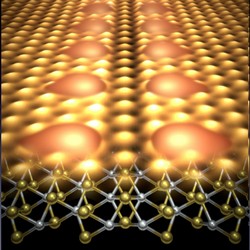Surface defects for high-efficiency photocatalysts
Increasing understanding of the fundamental processes in chemical reaction mechanisms is key to the development of more efficient photocatalysts. Photocatalytic reactions are best determined by the electronic level alignment between the catalyst and the reactant. This energy-level alignment depends strongly on the catalyst morphology and the reactant absorption site, but still remains poorly understood due to the difficulty of studying such processes at their fundamental molecular scale. The extraordinary optical and electrical properties of transition metal dichalcogenide (TMDC) monolayers make them ideal candidates for use in photocatalysis. Surface defects in 2D TMDC semiconductors can modify charge transport or introduce ferromagnetism. 1D defects such as grain boundaries and edges may alter electronic and optical properties and introduce magnetic or catalytic functionality. Within the EU-funded project PHOTOSTM (Investigating photo catalytic reactions at the molecular scale), scientists combined high-resolution microscopy and spectroscopy techniques to increase understanding of the electronic structure of the thin semiconductor molybdenum diselenide (MoSe2). The team proved the existence of isolated, 1D charge density waves at mirror twin boundaries (MTBs), intrinsic to single-layer MoSe2. Microscopy and spectroscopy measurements revealed a wide band gap at the Fermi energy level of the structure. Scientists reported periodic modulation in the density of the MTB states above and below the Fermi level consistent with charge density wave order. Density functional theory calculations reproduced both the gap opening and the modulations of the density of states. PHOTOSTM highlighted that defects in TMDC monolayers can significantly impact on the development of new photo-active materials, helping to tailor new properties.







